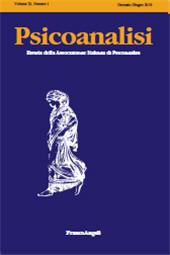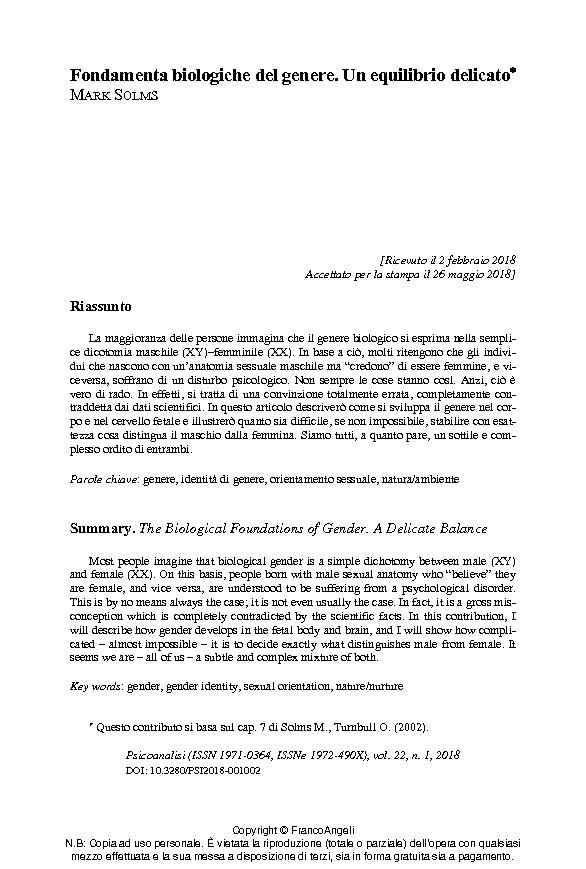Fondamenta biologiche del genere : un equilibrio delicato
27-43 p.
La maggioranza delle persone immagina che il genere biologico si esprima nella semplice dicotomia maschile (XY)-femminile (XX). In base a ciò, molti ritengono che gli individui che nascono con un'anatomia sessuale maschile ma "credono" di essere femmine, e viceversa, soffrano di un disturbo psicologico. Non sempre le cose stanno così. Anzi, ciò è vero di rado. In effetti, si tratta di una convinzione totalmente errata, completamente contraddetta dai dati scientifici. In questo articolo descriverò come si sviluppa il genere nel corpo e nel cervello fetale e illustrerò quanto sia difficile, se non impossibile, stabilire con esattezza cosa distingua il maschio dalla femmina. Siamo tutti, a quanto pare, un sottile e complesso ordito di entrambi. [Testo dell'editore].
Most people imagine that biological gender is a simple dichotomy between male (XY) and female (XX). On this basis, people born with male sexual anatomy who "believe" they are female, and vice versa, are understood to be suffering from a psychological disorder. This is by no means always the case; it is not even usually the case. In fact, it is a gross misconception which is completely contradicted by the scientific facts. In this contribution, I will describe how gender develops in the fetal body and brain, and I will show how complicated - almost impossible - it is to decide exactly what distinguishes male from female. It seems we are - all of us - a subtle and complex mixture of both. [Publishers' text].
-
Articles from the same issue (available individually)
-
Information
ISSN: 1972-490X
KEYWORDS
- Genere, identità di genere, orientamento sessuale, natura/ambiente
- Gender, gender identity, sexual orientation, nature/nurture



